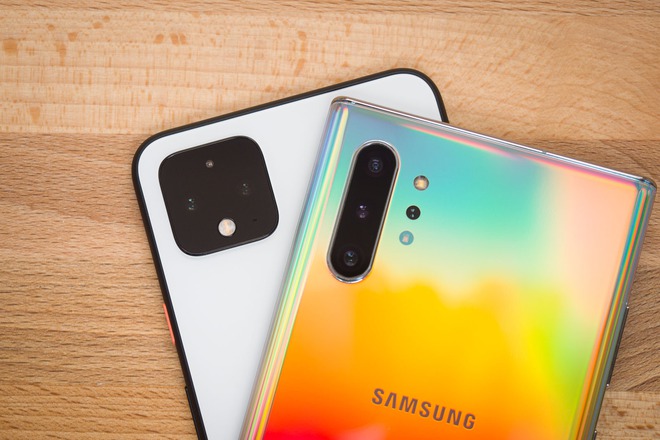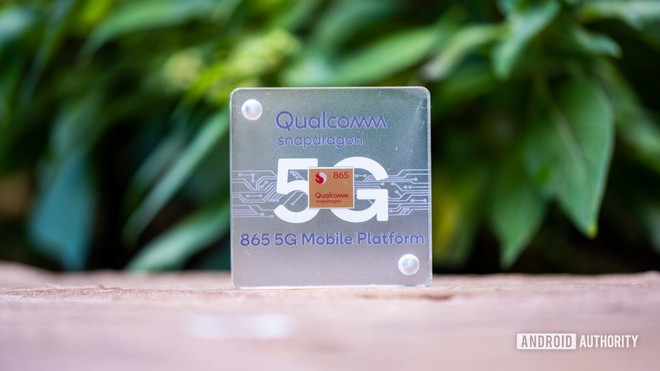No hatred, no grudge why Google wants to abandon Qualcomm and design its own processor for Pixel?
- Tram Ho
The leaked news indicates that Google is working with Samsung to develop new chipsets for their devices. Google’s new chipset is expected to appear on Pixel phones coming next year. This means that the Pixel 6 may no longer use Qualcomm chips.
While it may take some time for us to see this processor launch, why does Google need a new processor for Pixel phones? Does it have a special ability compared to rival Qualcomm or not?

Why does Google want a separate processor?
Since the first Pixel launched in 2016, Google has always used Qualcomm’s leading Snapdragon chipsets for its devices. So what makes the company want to find new solutions?
One of the main reasons for this may be that Google has been increasingly focusing on machine learning and image processing capabilities in recent years. We’ve seen the company attempt to design its own chips to address these needs, such as the Pixel 2 and Pixel 3 shipped with the Pixel Visual Core core to enhance image processing. The search giant is even more advanced on the Pixel 4 series with the improved Pixel Neural Core core.
With tons of advanced photography features like HDR +, Night Sight night photography, dual exposure control, Google Assistant, Live Caption and Recorder app, it’s easy to understand that Google needs its own chip. Developed to bring the best performance to these features.

Qualcomm’s Snapdragon 865 chipset currently has a relatively high price compared to before.
However, the Google self-developed chips are now located next to Qualcomm’s Snapdragon chipset instead of being placed right inside it. In theory, placing these semiconductor chips right inside the processor would create a more energy efficient design. Unfortunately, Qualcomm does not allow other brands to add their own chips into their chipsets.
There is also another possibility that Google wants to make its own chips to reduce dependence on Qualcomm. One disadvantage of this is the price. Currently, the price of Snapdragon 865 is significantly more expensive than previous Snapdragon 800 series chips. Therefore, Google, like many other high-end smartphone brands, may be forced to raise the price of its phones to absorb the expensive cost of the new chipset.
Finally, even if Qualcomm’s Snapdragon 800 chipset family can be considered as one of the best high-end processors in the world, it’s not entirely perfect. Samsung’s Exynos chip even supports 4K / 60fps and 8K videos before the Qualcomm processor. MediaTek’s top-of-the-line processor also features dual 5G SIM and AV1 video decoder.
Google Assistant virtual assistant.
However, if Google doesn’t want to pay a hefty sum to another company, it can integrate tighter the operating system and its own chip, as well as freely add new features and chipset designs. Particularly is inevitable.
What will this chipset look like?
According to rumors, the new chipset will be designed by Google and manufactured by Samsung on the 5nm process. This shows that Samsung will not contribute to the design of this processor.
If so, Google will most likely have to use components specifically designed for its CPU and GPU. ARM is probably still the first choice for brands that want to customize their CPU and GPU. Rumors suggest the new chipset will be an 8-core ARM CPU. This suggests that Google will use the latest ARM CPU cores, such as Cortex-A77 or even Cortex-A78 (although this design has yet to be released) as rumored by Korean media.
The duo Pixel 4 and Pixel 4 XL.
The GPU graphics chip is a bit harder to guess, but most likely Google still uses the latest ARM GPU. In fact, South Korean sources say that Google’s chipset will use an unpublished GPU from ARM, which is based on their Borr architecture. Historically, ARM GPUs have often lagged behind Qualcomm’s Adreno chips in performance, so we need to wait until it launches to know exactly what it’s capable of.
But will Samsung have a bigger role in designing processors for Google? It is very difficult to say in advance about that. Recently, Samsung had to shut down its CPU customization department – meaning it was almost impossible to contribute its CPU technology to Google’s processors.
A few months ago, however, Samsung announced a partnership with AMD to develop a mobile GPU. It’s hard to hope that a partnership between Samsung and Google will allow the Korean company to share AMD patents with Google – but it’s clear that Google’s processor will be more different if it gains more power. from AMD GPU.
Not just CPU and GPU
In fact, CPUs and GPUs are only half the battle that Google faces when it wants to design a processor to compete with Qualcomm or MediaTek. Currently, companies focus on heterogeneous processing when creating chips dedicated to specific tasks instead of having the CPU and GPU process.
Google has also followed this trend in its previously designed chips, when it comes to processing machine learning tasks for the Pixel Neural Core and image tasks for the Pixel Visual Core. Therefore, it is likely that the same thing will be done by Google on its new processor.
Customizing the chipset also gives Google the opportunity to develop from scratch new chips to include in this SoC, such as image signal processors, a security chip for face unlock, technology. listen constantly and more.
Still another piece of this picture is a modem, and this is a cornerstone of many companies like Intel and Nvidia for many years. Perhaps Google would not be foolish to find a way to head on that rock when it has to overcome a series of technology challenges and patent issues. Most likely the company will still rely on Qualcomm, Samsung or even MediaTek modems.
Refer to Android Authority
Source : Genk
